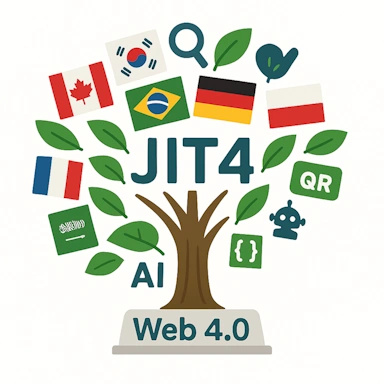The need: Web 4 must promote SaaS
SaaS will happen anyway. Web 4 brings it into the fold: capability comes from
composable services (auth, catalog, checkout, payments, tax, search), while
truth remains portable so edits, theme changes, platform moves, and language shifts
do not break what people rely on to decide and buy.
Where demand comes from (signals you can’t ignore)
- D1 — Spiky attention: interest surges weekly, not quarterly.
- D2 — Constant switching: themes/platforms/trends churn; links rot.
- D3 — Proof gap: buyers and execs ask “where does it say that?”
- D4 — Support drag: tickets re-explain known answers.
- D5 — Language parity: same claim needed across locales, line-true.
- D6 — Captivity risk: fear of moving vendors slows innovation.
- D7 — Freshness doubt: “is this still true?” stalls checkout/compliance.
- D8 — Tiny teams: no time for redesign; only small changes ship.
- D9 — Cash discipline: ROI must land inside a billing cycle.
- D10 — Discovery decay: long-tail answers (mom-and-pops) get buried.
We will use these labels (D1–D10) to keep the argument tight.
How Web 4 meets the need — without MM1
- Composable SaaS spine (D1, D2, D6): choose swap-able providers for auth/checkout/payments/tax/search; publish contracts (limits, locales, pricing) so switching is planned, not painful.
- Self-describing pages (D3, D10): server-render core copy; structured data matches visible text; clean canonicals; parameter discipline.
- DOM exposure (D3, D4): tabs/accordions render their text in the DOM with semantics/ARIA; no “hidden until JS.”
- Global by default (D5): true hreflang, currency/units/locale aware copy; translation ops keep parity with what is visible.
- Freshness signals (D7): human + machine readable page-level “updated” notes and a simple changelog.
- Operational metrics (D8, D9): track time-to-clarity (section-level), support minutes saved, and planned vendor-swap time.
Goal: sell anywhere via composable services while keeping page-level hygiene strong. No new primitives required.
How MM1 helps (optional accelerator, not the goal)
MM1 is a thin, browser-native portability layer: exact-line landing, drift signal, locale parity,
and a tiny changefeed. It doesn’t replace SaaS; it makes SaaS safer to adopt and safer to replace.
- D1 (spiky attention): pre-composed exact-line answers surface instantly; shares ride the surge.
- D2 (switching): stable paragraph IDs + sentence resolution keep old links valid after a theme/platform move.
- D3 (proof gap): “where does it say that?” → link lands on the sentence; drift badge if edited.
- D4 (support): macros paste one line-link; UI opens the right state; deflection rises.
- D5 (language): share resolves to the reader’s locale at the same sentence (line-true mapping).
- D6 (captivity): exit costs drop; planned vendor swaps don’t break citations or funnels.
- D7 (freshness): sentence-level “updated since citation” with a lightweight changefeed.
- D8 (tiny teams): overlay the top 10–50 claim lines/page; no redesign.
- D9 (cash): faster clarity + fewer back-and-forths → ROI inside a billing cycle.
- D10 (discovery): long-tail sites rank/share better because answers are addressable.
If two or more of D1, D3–D7 are acute, add the MM1 layer this quarter.
Two moves this quarter
1) Stand up a services spine (SaaS-first)
Select interchangeable providers, make contracts visible, and prove a planned swap (e.g., search or payments) without breaking content or links.
2) Pilot portability where it hurts
Pick one high-impact page. Add stable paragraph IDs to 10–50 claim lines, enable exact-line landing/highlight, and emit small change notes.
Measure what matters
- Time-to-clarity: seconds to reach the answering line (or tight section).
- Verified-link rate: % of shared links that still resolve exactly after edits/migrations.
- Movement cost: hours to switch a vendor with links/carts intact.
What’s next
Web 4’s stance is simple: promote SaaS and keep truth portable so revenue survives change—from a Nepali village today to a Spanish rare-earth find tomorrow.
The mechanics of exact-line landing and verification live in Web 5.
Continue: Web 5 — Overview
